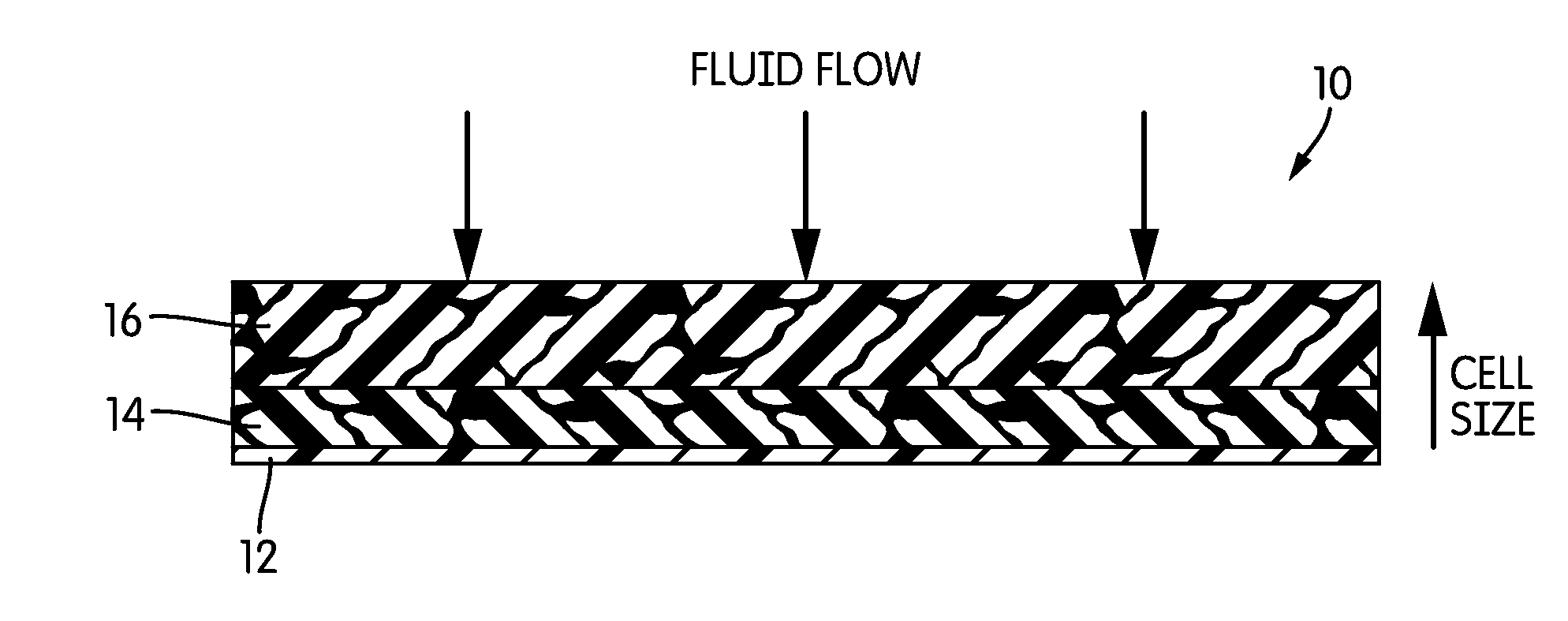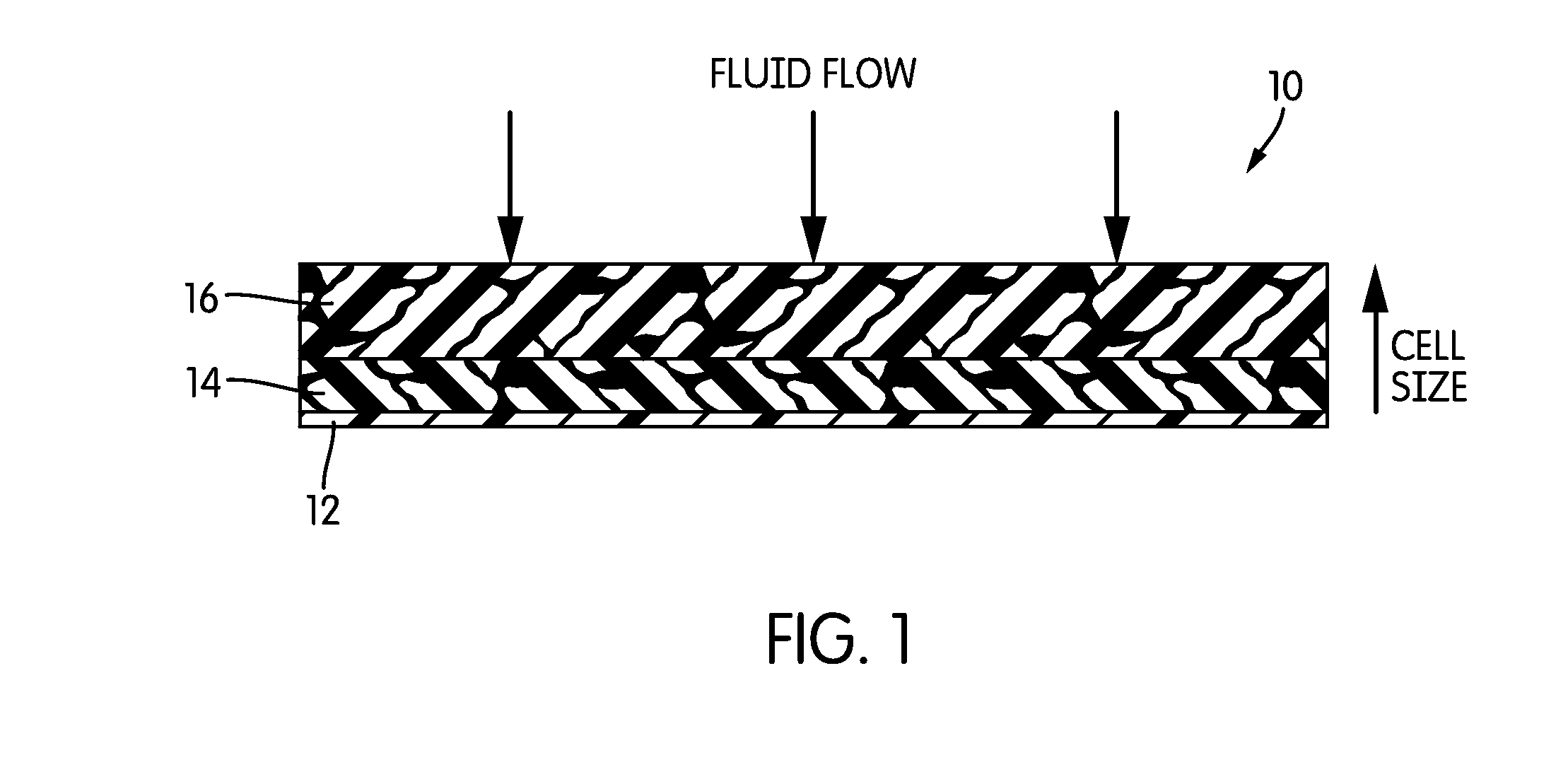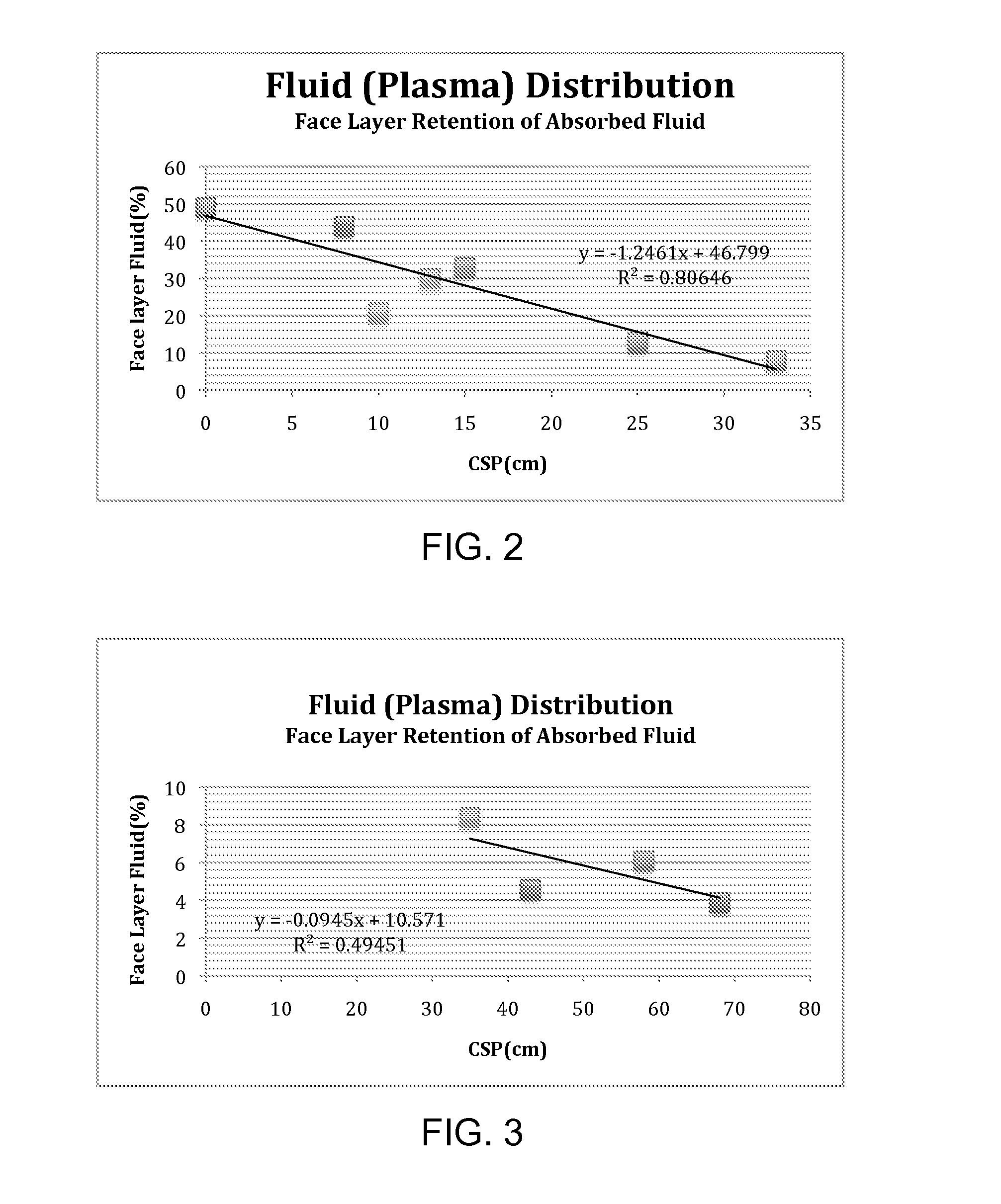Methods for Using Polymer Foam Absorbent Materials in Wound Dressings
a technology of absorbent materials and wound dressings, applied in the field of wound dressings using polymer foam absorbent materials, can solve the problems of affecting the healing effect of wounds, and requiring special care, and presenting long-term problems with burns
- Summary
- Abstract
- Description
- Claims
- Application Information
AI Technical Summary
Benefits of technology
Problems solved by technology
Method used
Image
Examples
example 1
Measurement of CSP in HIPE Foams
[0045]HIPE foams with cell sizes ranging from about 10-150 μm were selected for testing for use in composite foam dressings. Table 1 below lists the characteristics of the various foams. In Table 1 below, polymer (I) is made according to the teachings of Dyer et al., U.S. Pat. No. 5,795,921; polymer (II) is made according to the teachings of Dyer et al., U.S. Pat. No. 5,633,291; and polymer (III) is made according to the teachings of DesMarais et al., U.S. Pat. No. 5,331,015. All of those patents are incorporated by reference in their entireties.
TABLE 1Foam Characteristics.Oil / waterCell Size RangeHydratableFoam TypeRatioPolymer(Av. Hole Size)saltA (expanded)1:25(I) Acrylate30-100 μm (15 μm)calciumchlorideB (expanded)1:15(II) Styrenic20-100 μm (13 μm)calciumchlorideC (collapsed)1:60(III) Styrenic 4-20 μm (calciumchlorideD (collapsed)1:30(I) Acrylate 2-15 μm (calciumchloride
[0046]The ability of the individual foam sheets to draw fluid via capillary suct...
example 2
Construction of HIPE Foam Composite Dressings
[0050]HIPE foam composite dressings with capillary gradients were created by layering the HIPE foams of Example 1. In constructing these composite gradient dressings, the face layer of the dressing (front layer 16, with respect to the illustration of FIG. 1) had the lowest CSP and foams of increasing CSP were chosen for subsequent layers to create the gradient.
[0051]All dressings were evaluated in the laboratory for their ability to absorb blood plasma and store it away from the face layer. Dressing pieces measuring 2.54 cm×2.54 cm were exposed to 1.5 to 2.5 mL warm (37° C.) plasma using a peristaltic pump at the rate of 0.5 mL / hr. The wet dressing was allowed to equilibrate in ambient conditions within sealed environment (thus preventing moisture loss) for 24 hours. After 24 hours, each layer was removed to measure fluid content gravimetrically. The fluid content of the face layer was calculated as percentage of total fluid retained in t...
example 3
Two-Layer Composite Dressing with Backing Film
[0054]It is expected that dressings according to embodiments of the invention will be used for long periods of time without the need to change dressings in order to avoid leaks. The long-term performance of dressings was measured using a continuous infusion protocol in the laboratory. A 6 cm×6 cm absorbent dressing was placed face-down on a glass plate and taped around the sides to avoid any moisture loss from areas other than the back / backing film. The face layer was dosed continuously with warm (37° C.) blood plasma at a rate of 0.5 mL / hour until free fluid was observed at the edges of the dressing. The dressing was removed and weighed to calculate moisture loss using the amount of fluid applied and retained at the end of dosing period. The results are shown below in Table 4.
TABLE 4Duration of use for dressingsTwo-layer composite: First layer foam A / Second layer foam DMoistureLoss (%)DaysBackingin 24 hoursto LeakNone89>10MICROPORE ™ (M...
PUM
| Property | Measurement | Unit |
|---|---|---|
| average cell size | aaaaa | aaaaa |
| average cell size | aaaaa | aaaaa |
| hole size | aaaaa | aaaaa |
Abstract
Description
Claims
Application Information
 Login to View More
Login to View More - R&D
- Intellectual Property
- Life Sciences
- Materials
- Tech Scout
- Unparalleled Data Quality
- Higher Quality Content
- 60% Fewer Hallucinations
Browse by: Latest US Patents, China's latest patents, Technical Efficacy Thesaurus, Application Domain, Technology Topic, Popular Technical Reports.
© 2025 PatSnap. All rights reserved.Legal|Privacy policy|Modern Slavery Act Transparency Statement|Sitemap|About US| Contact US: help@patsnap.com



